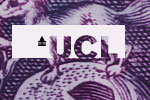

 |
 |
Batavian identity?Throughout the 17th century, the carefully conceived ##Batavian identity was disseminated in various ways. The main stronghold of the Dutch East India Company in Asian waters, on the island Java, was christened ‘Batavia’ in 1619. The name of the town was not changed until Indonesia gained independence from The Netherlands in 1948, when it was re-named Jakarta. The Batavian concept continued to play a major role in Dutch Golden Age literature. Johan van Heemskerck, in 1637, wrote the highly popular Inleydinghe tot het ontwerp van een Batavische Arcadia. The text discussed an idyllic trip of some friends from The Hague to the sea-side town of Katwijk. Vondel used the theme for his play Batavische gebroeders (1663), which again raised the connection between the Batavian and the 16th century Dutch Revolt.
After the fall of the Dutch Republic in 1795, the Dutch identification with their Batavian forefathers did not disappear. Supported by French troops, the anti-Orangist faction called Patriots unleashed the so-called ##‘Batavian Revolution’, which resulted in the ‘Batavian Republic’ (1795-1806). Although the new Dutch state was entirely subservient to France, some important new developments were set in motion. The States-General was replaced by the National Assembly, which can be considered the first democratically elected Dutch parliament. The Assembly, in 1798, presented the first Dutch constitution, the so-called Staatsregeling. In the late 18th and >19th centuries the Batavians appeared in the classrooms of Dutch schools. |